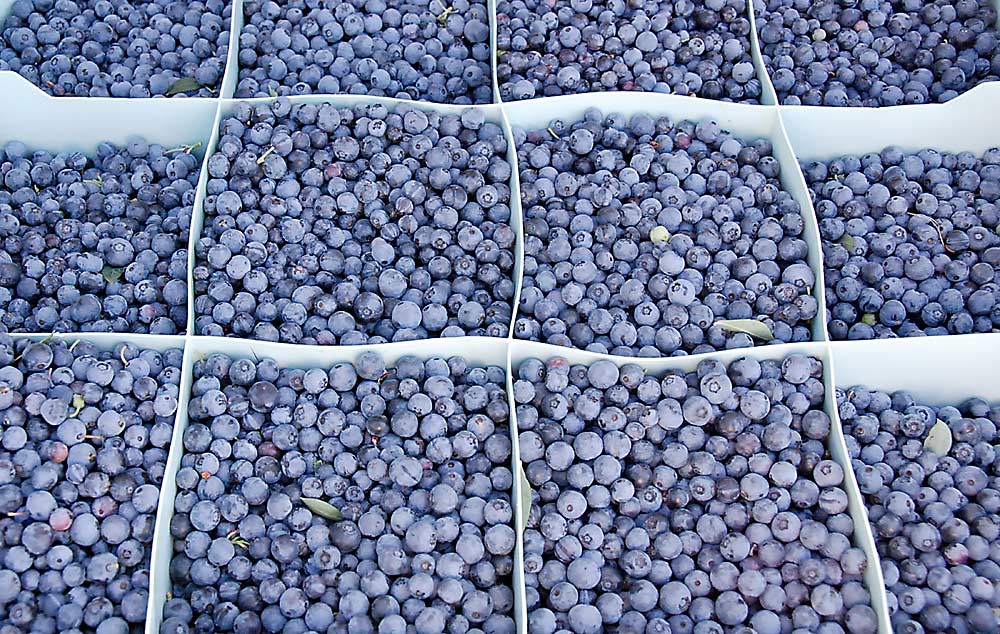
The fresh-market blueberry industry needs berries that are large, free of defects and remain firm throughout storage. Flavor and texture are becoming increasingly important. Also, the fruit must be efficient to harvest both by hand and machine, said Washington State University associate professor and small fruit specialist Lisa Wasko DeVetter.
For processing berries, important traits include size, color and ease of machine harvest.
Both markets require high yields in order to maximize profitability. Seasonality is also important for targeting specific market windows that can be more profitable, as well as balancing labor availability and other operational logistics, Wasko DeVetter said.
Good Fruit Grower reached out to public and private breeding programs, seeking information on their latest blueberry releases or varieties they plan to release soon. The descriptions provided by the breeders will familiarize growers with some of the newest blueberries available.
Fall Creek Farm & Nursery
Fall Creek Farm & Nursery’s ArabellaBlue is a high-chill variety that ripens in midseason. Its large berries have excellent flavor and aromatics, even after long-term cold storage (42 or more days, on average).
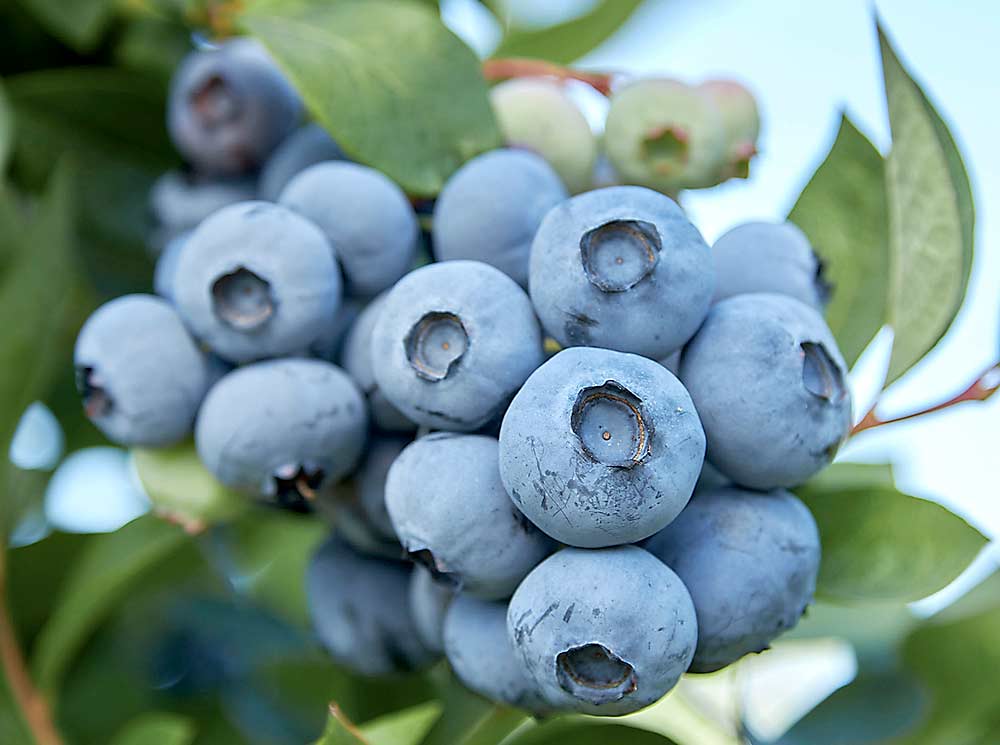
LoretoBlue is a high-chill variety that ripens in midseason. It has high yields of uniform, very firm, large fruit and offers excellent shelf life, maintaining superior firmness at harvest and throughout cold storage (42 or more days, on average). Fruit can be held on the plant to achieve a more concentrated ripening, which is often well-suited to machine harvest. Plants are uniform and put out many new canes each year, which can make pruning easier.
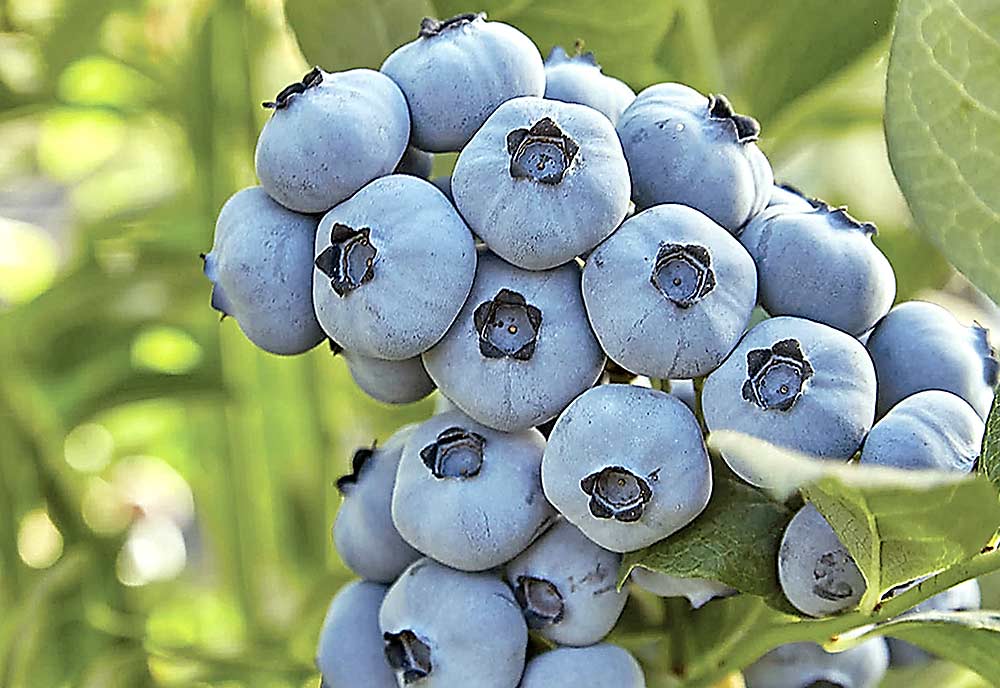
LunaBlue is a high-chill variety that ripens late in the season. It has high yields of very uniform, large berries that maintain quality in cold storage (35 to 42 days, on average). The variety gives growers a high-quality option in the late-season window when there are few varieties to choose from.
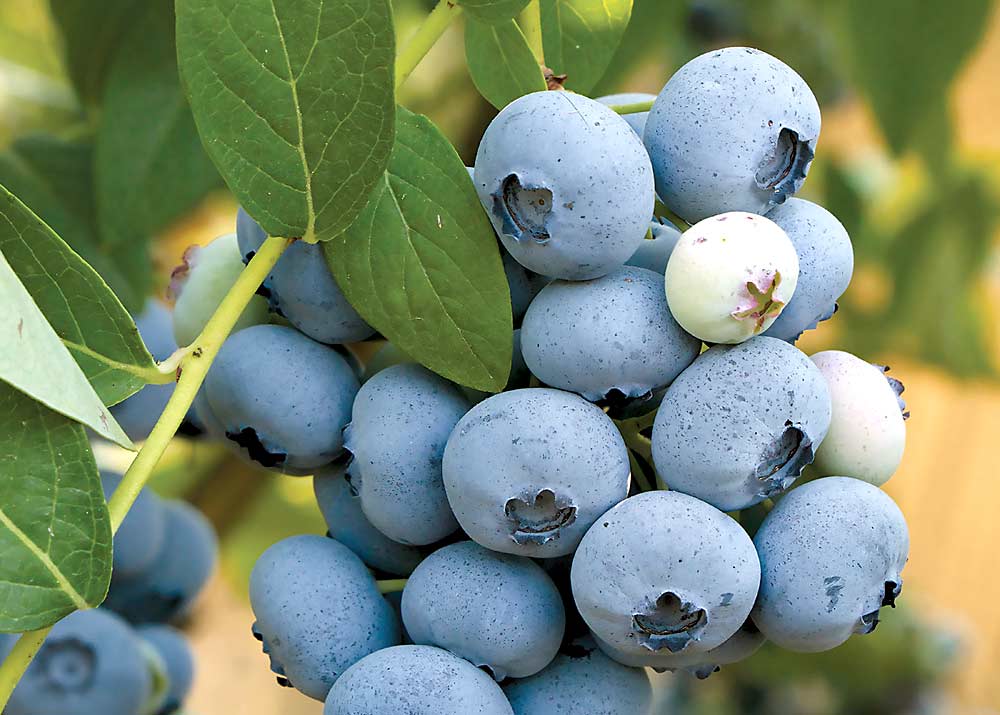
U.S. Department of Agriculture and Oregon State University cooperative breeding program
Mini Blues is a northern highbush cultivar with very small berry size, excellent aromatics and an intensely sweet flavor. It is well-suited to specialized processed markets, but with more consistent size, flavor and quality than Rubel or lowbush blueberries. Mini Blues can be pruned using a speed pruning method and is intended for machine harvest. Mini Blues performs well in organic production systems.
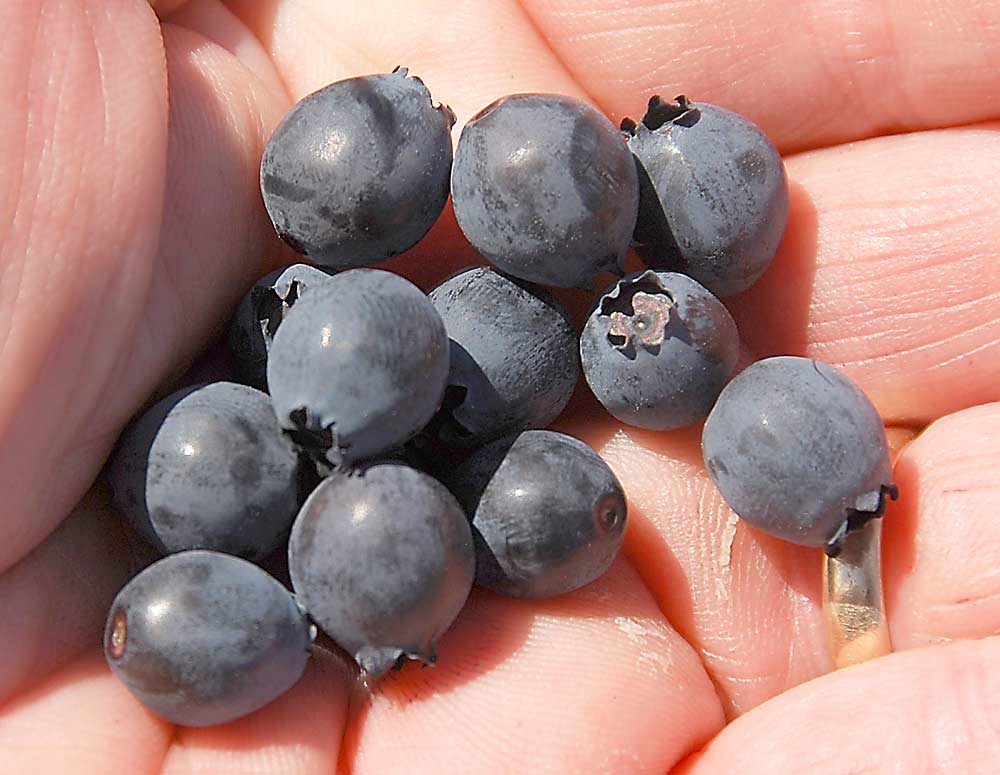
Echo is an ornamental blueberry, primarily for the home garden and landscape trade. Echo produces more than one crop per season and was developed from northern-adapted germplasm. In Oregon, it flowers in April and ripens in late June and early July. Plants begin flowering again on new growth in mid- to late July and August. The second crop tends to be heavier than the first and begins to ripen in late August — until the weather becomes too cold. Plants are compact with shiny, dark-green foliage.
Michigan State University
Michigan State University’s most recent release is Katahdin, a highly productive blueberry with excellent fruit quality. It is likely well-adapted to all northern highbush production areas. Plants are vigorous and upright, although the canes can be lax when loaded with fruit. Canes are numerous and moderately branched, and the fruit is well-exposed. Berries are large with medium-blue color, good firmness and flavor.
Katahdin’s fruiting season significantly overlaps Draper and Bluecrop. Katahdin has larger, firmer fruit than Bluecrop and a much smaller picking scar. Its berries can be a bit smaller than Draper, but otherwise Katahdin has comparable quality. It is much more vigorous than Draper and more productive.
MSU’s next release, Capella, might not be publicly available from nurseries until 2023. In multilocation trials, Capella has proven to be an extremely upright, very vigorous bush that ripens in midseason.
At most locations, Capella has produced good to excellent yields, and its berries have been good to excellent in size, color, firmness and flavor. Capella ripens an average of eight days after Draper and Bluecrop. Capella has a more upright plant habit and higher yields than Draper, and it has comparable fruit quality, except it is slightly darker blue. Capella has been superior to Bluecrop for fruit weight, color, firmness and picking scar.
Berry Blue
Private breeding company Berry Blue’s latest release is Envoy. Envoy is most adaptable to high-chill environments, with approximately the same maturity timing as Duke. Berries are very large and firm, light blue with a nearly round shape and a concentrated ripening period. Flavor is excellent, with balanced sugar and acidity and a crunchy, juicy texture. Growing very upright, the plant has very good vigor and leafing.
University of Florida
Sentinel is a vigorous, early season, high-yielding cultivar with no known disease issues and is best adapted to north-central and central Florida. A moderate level of susceptibility to chilli thrips has been observed, similar to other cultivars. •
—by Matt Milkovich

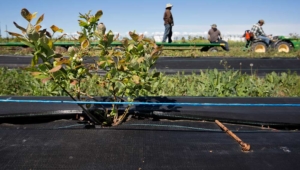





Leave A Comment